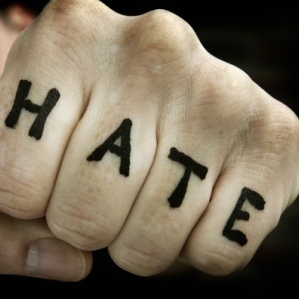
Lifestyle/Community

Walking fine line between permitted and prohibited forms of expression

click to dowload our latest edition
CLICK HERE TO SUBSCRIBE TO OUR NEWSLETTER


Published
8 years agoon
By
adminSTAFF REPORTER
The ubiquity of social media racism, combined with the mounting instances of racially-charged rhetoric in the political arena and continuing xenophobic violence against foreign migrants, is undermining national unity at a time when the country is facing a range of critical challenges.
The South African government, in evident recognition of the seriousness of the problem, has in the course of this year embarked on a number of far-reaching initiatives to combat racism and related intolerance at every level of society. This includes the launch of a “National Action Plan to combat Racism, Racial Discrimination, Xenophobia and Related Intolerance” (NAP) and the drafting of new anti-hate crimes legislation that will come before Parliament in September.
From the outset, the SAJBD’s position has been that while the right to freedom of expression is indeed a crucial pillar of democracy, this right does not extend to what can be regarded as “hate speech”, whether based on race, religion, ethnicity, nationality or other grounds concerning a person’s intrinsic identity.
To this end the SAJBD has over the years made significant input into public policy relating to freedom of expression and its limitations, including the post-apartheid Constitution and the Promotion of Equality and Prevention of Unfair Discrimination Act (PEPUDA).
As previously reported, the Board has this year made submissions on the NAP, the annual Constitutional Review and the Film and Publications Amendment Bill. It will do likewise with the new hate crimes legislation when the time comes.
The submissions made, while focusing on hate speech questions, have further made recommendations relating to the broadening of tolerance education and strengthening such statutory regulatory bodies as the SA Human Rights Commission.
The most far-reaching – and controversial – aspect of the Board’s recommendations concerns how prohibited hate speech should be defined. Currently, the relevant section in the Bill of Rights states that the right to freedom of expression does not extend to: (a) propaganda for war; (b) incitement of imminent violence; or (c) advocacy of hatred that is based on race, ethnicity, gender or religion, and that constitutes incitement to cause harm.
The Board, largely based on its own experiences in pursuing anti-Semitic hate speech cases in various forums, has taken the view that the third leg of this definition takes an overly-narrow approach when it comes to defining and identifying proscribed forms of expression, since it would appear that “advocacy of hatred” on the grounds listed would be proscribed only when coupled with “incitement to cause harm”. This definition, it was submitted, did not take into account the realities of how damaging racist hate speech was in and of itself, even though in most cases, such offensive discourse did not involve direct “incitement to cause harm”.
To illustrate its contention, the Board pointed to the now notorious Penny Sparrow affair, which concerned a Facebook post likening black holidaymakers on Durban’s beaches to “monkeys”. This comment did not incite actual harm against the people identified, and as such did not fulfil the criteria for what constitutes prohibited hate speech.
However, no-one could deny that the comment, in view of the enormous hurt and anger it caused throughout the black community, had been harmful. Just as significantly, it had led directly to a flurry of anti-white responses, many of which clearly did constitute incitement to cause harm (the comment that attracted widespread attention was that of Gauteng government employee Velaphi Khumalo stating that blacks should act towards white people “as Hitler did to the Jews”, but there were scores of others).
Some have expressed serious misgivings about the SAJBD’s approach, arguing that it may become a slippery slope leading to the censoring of legitimate viewpoints. In response, it is necessary to emphasise that the Board in no way advocates laws curtailing freedom of debate, nor the right of people to disagree, even strenuously, with one another.
It is acceptable to attack a person’s ideas, but not when this takes the form of gratuitous and offensive attacks on such a person’s identity, whether based on racial, religious, ethnic, gender or other grounds listed in PEPUDA and elsewhere.
It is true that establishing where the boundaries lie between permitted and prohibited forms of expression is not an exact science, but that does not render the challenge of attempting to do so insurmountable.
By addressing each incident on a case-by-case basis, and applying basic principles of objectivity, empathy and common sense, those charged with ruling on such questions should be able to come up with broadly acceptable guidelines for determining what crosses the line and what doesn’t.
Through this, it will hopefully be possible to greatly reduce the current levels of racist discourse in South African society, which contribute so much to the already unhealthy levels of anger, mistrust, resentment and fear that permeate it and militate so strongly against people working together for the common good.

Sydney Kaye
Aug 3, 2016 at 5:25 pm
‘The law is to be welcomed because \”hate speech\” will have to be properly defined and also within the constraints of the Constitution.
More important it will be a law of general application and will apply to everybody including officers of the ANC. It also means the ANC will not be able to decide what is or is not hate speech deoendng on what suits it. ‘